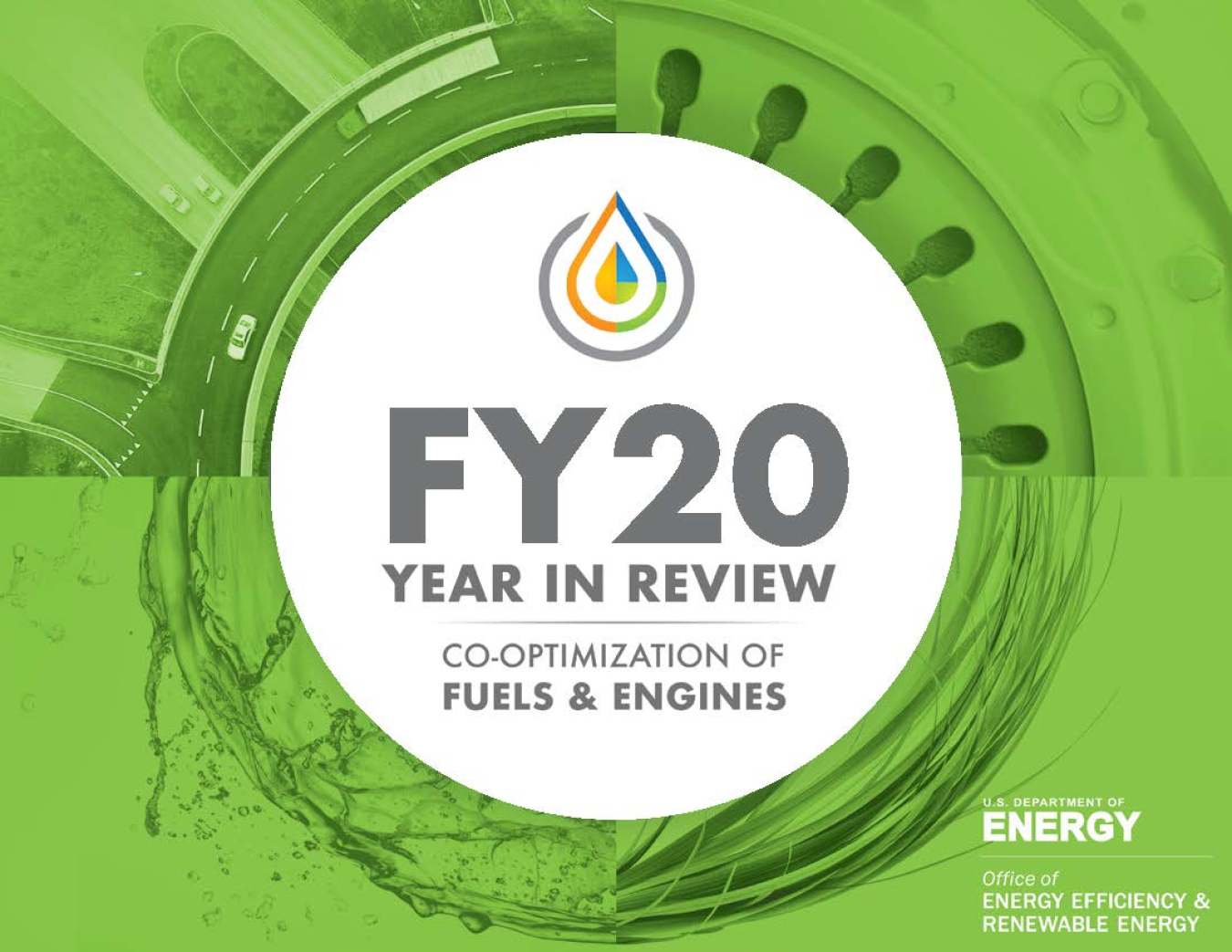
The Co-Optima FY20 Year in Review spotlights recent engine and fuel innovations.
A report released this week highlights the most significant breakthroughs of the last year in the U.S. Department of Energy’s (DOE’s) Co-Optimization of Fuels & Engines (Co-Optima) initiative, with details on findings that could translate into significant greenhouse gas and tailpipe emissions reductions. The collaborative research undertaking has brought together top scientists, engineers, and analysts from across the nation to examine how simultaneous improvements to fuels and engines can maximize energy efficiency and the use of renewable fuels, while decreasing transportation sector emissions for the entire on-road fleet.
Co-Optima researchers are focused on identifying and understanding fuel components known as blendstocks, which can be produced from a wide spectrum of common domestic resources. These include renewable domestic biomass, such as forestry and agricultural waste, which can be combined with petroleum-based fuels to improve vehicles’ carbon footprint and engine performance.
Recent Co-Optima heavy-duty and medium-duty research has concentrated on increasing the renewable content of diesel fuel for use in both the engines typically found in today’s commercial vehicles and revolutionary new truck engine designs. Light-duty research has focused on multimode approaches that combine a range of combustion strategies.
Download the Co-Optima FY20 Year in Review report.
Get more details on the report.
Learn more about the Co-Optima initiative.

